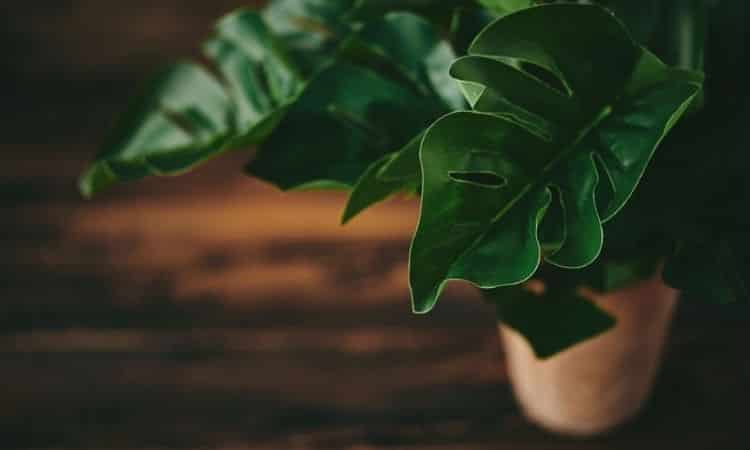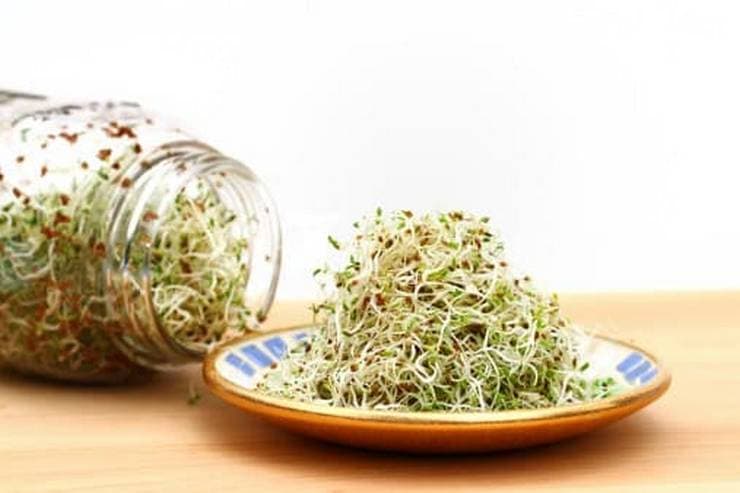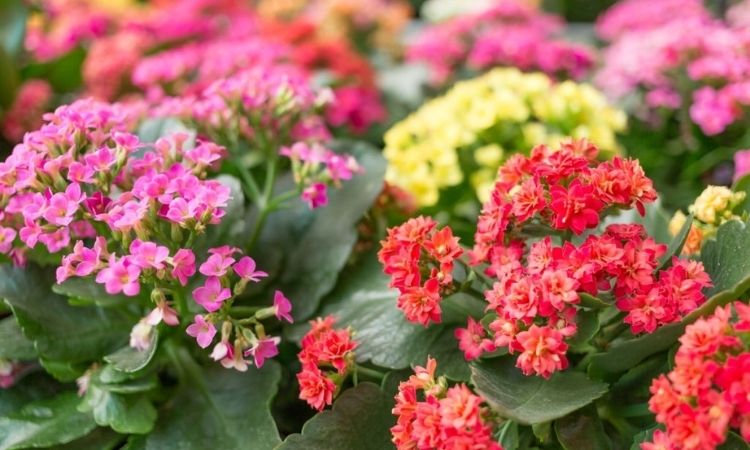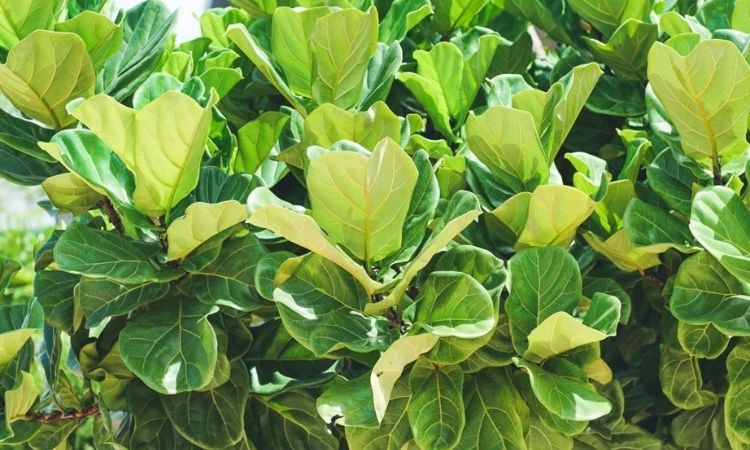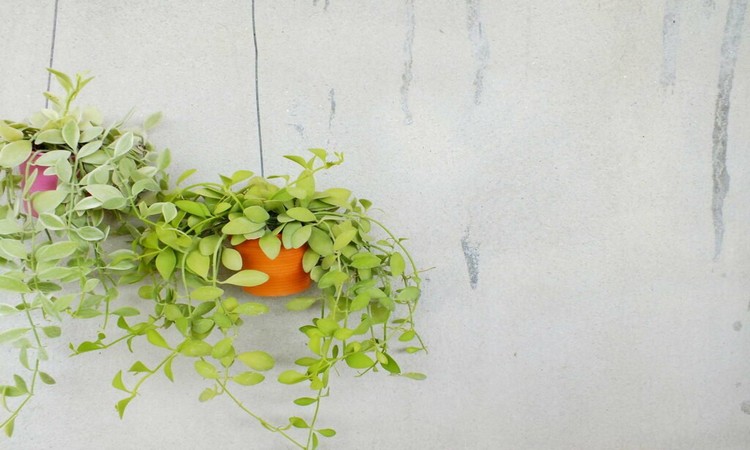How To Fix Brown Spots On Monstera Deliciosa Leaves
The Monstera Deliciosa or Swiss-cheese plant, scores with its strong growth and huge decorative leaves with deep incisions. If these suddenly get brown or black stains, there can be many reasons.
Optimal Temperature Range
Table of Contents
The Monstera Deliciosa has its home in the tropical rainforests of Central and South America. There, pleasant temperatures between 25 and 30 degrees Celsius and high humidity prevail throughout the year. If it is too cold for the monstera, it initially gets brownish to black spots. If the air is too dry, the tips of the leaves turn brown. Do you suspect that your plant suffers from the cold? Then measure the temperature in its immediate vicinity with a thermometer.
In the months between April and October, the room temperature should ideally be between 20 and 28 degrees Celsius. In the second half of the year, when it is darker outside, it may be a bit cooler in the location. Between October and March, the exotic grows only a little, so temperatures around 20 degrees Celsius are perfectly adequate.
However, it must not be cooler than 16 degrees Celsius under any circumstances. Make sure that the plant is not exposed to any drafts or temperature fluctuations when airing, this also causes leaf discoloration.
Blazing Sun/Heat
However, not only cold but also heat or blazing sunlight cause unsightly leaf spots. Intense sunlight burns brown or black holes into the large leaves. The Monstera Deliciosa thrives under the protection of the large jungle giants in the middle of the rainforest, where it is bright but not directly sunny. Therefore, the plant feels most comfortable in a bright location without direct sun. To avoid stains, the Monstera:
- do not stand in the blazing sun,
- if possible not at a window facing south,
- protected from the intense midday sun.
Windows facing east or west are ideal, as they usually only let in direct sunlight in the morning or afternoon. If you place your The Monstera Deliciosa on the balcony or terrace in the summer, protection over the midday is recommended. An awning, for example, prevents leaf burns.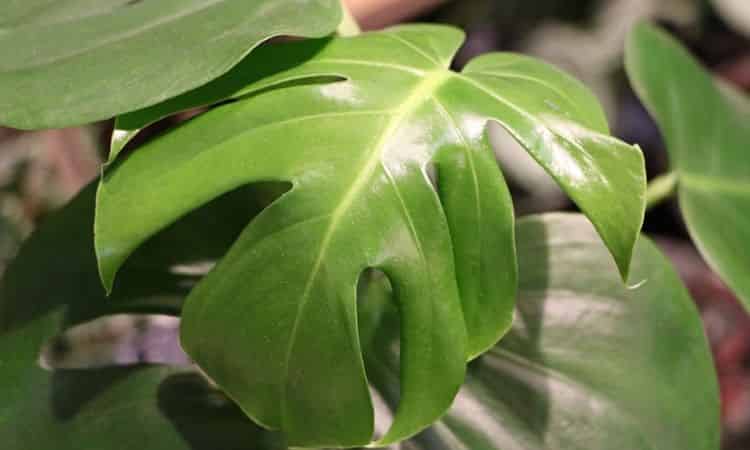
You Might Also Like Why Is My Monstera Plant Drooping?
Dark Location
Although the Monstera leaf may well be placed in a somewhat shaded position, too little sunlight also leads to unwanted discoloration of the leaves. The fact that your plant is standing too dark is firstly shown by the missing or only weakly pronounced indentations or notches on the leaves. These are now only weakly pronounced or even not present at all.
The yellowish to brownish discoloration of the leaves comes a little later. In addition, weak growth and conspicuously small leaves indicate a lack of brightness. Typically, these also show a darker green tone than in specimens that are lighter in color.
In this case, only a change of location can help. Place the Monstera in a place that is not directly sunny, but as bright as possible near a window. However, this should be one and a half to two meters away, because the plant must stand freely in the room.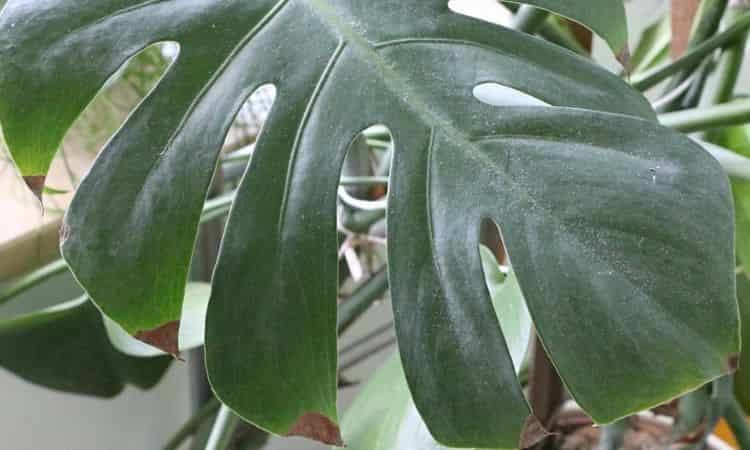
If the leaves touch window panes (which heat a lot in summer and can be icy cold in winter), brown or black spots on the leaves of the Monstera will be the result. If such a location is not available, install a plant lamp directly above the plant to provide the desired light intensity.
Fungal Infection And Eyespot Disease
Besides an unsuitable location, wrong temperature, or care mistakes, the fungus Spilocaea oleagina can also cause brown or black spots on the leaves. The infection shows itself through a typical damage pattern:
- round and inside light brown stains,
- the edge is a little darker, in the middle lighter,
- rest of the leaf is often yellow,
- later complete brown to black discoloration of the leaf.
This disease is also called eyespot disease or peacock eye because the leaf spots remind the viewer of the eyes. Infected leaves should always be removed, otherwise, the spores will transfer to other leaves.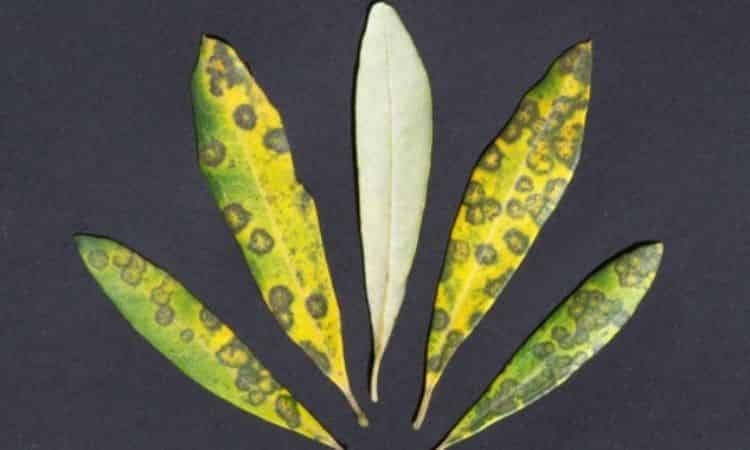
Combat eyespot disease as follows:
- in case of severe infestation cut back plant completely,
- strengthen with horsetail broth or liver moss extract,
- Use sharp and disinfected scissors to remove infected leaves,
- then disinfect them again in alcohol,
- Dispose of cuttings in household waste, never put them in the compost,
- Usually, the monstera recovers and sprouts again soon.
Discoloration Of Whole Leaves
If the leaves of the monstera discolor completely instead of spotted, it is probably due to one of the following causes.
Frequent watering and waterlogging
“Wet feet”, as waterlogged feet are often called, are not tolerated by the exotic plant at all and reacts with brown, seemingly dried out leaf discoloration. This sounds paradoxical at first, but it is not. Wet soil causes the roots to rot over time so that they can no longer absorb water and supply the above-ground plant parts. Thus, the leaves dry out even though there is apparently enough moisture.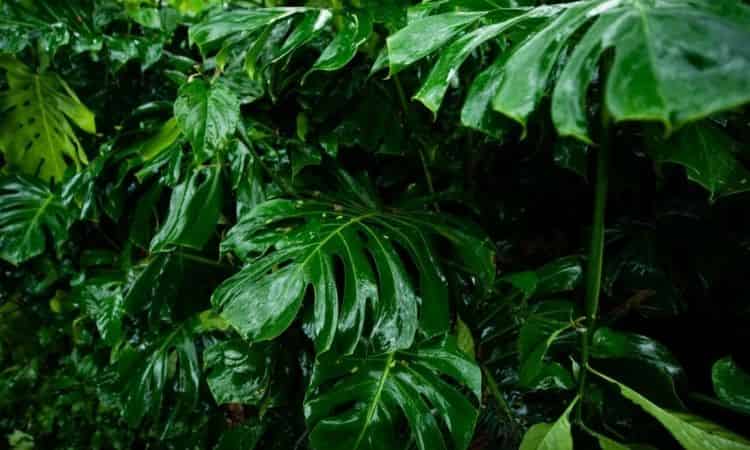
This is how you save your The Monstera Deliciosa:
- Pot and transplant into the fresh substrate,
- remove rotting roots and wet substrate,
- no longer cast.
Dry Stress
But beware: even too little water can lead to unsightly spots on the leaves of the monstera. If there is a lack of water, the leaves first turn yellow, later they become brownishly withered and finally die. So water the plant properly:
- Water weekly and abundantly in summer,
- in winter moderately every two weeks,
- drain off excess water,
- Pot drainage from clay granules,
- Spray plant regularly,
- finger test before pouring.
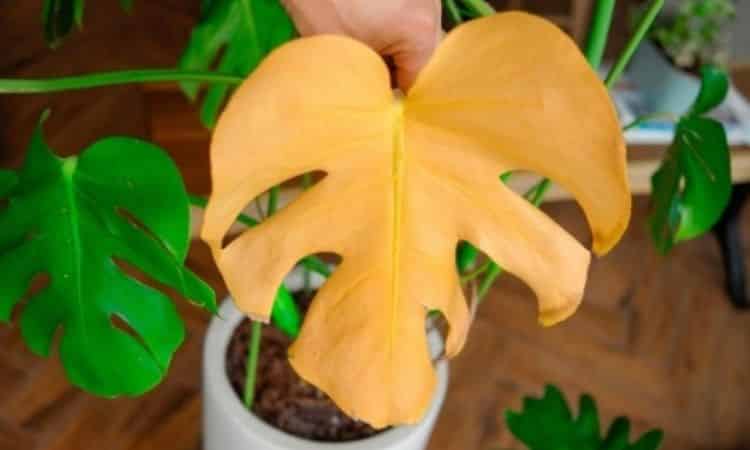 Moreover, you should never water The Monstera with cold water directly from the tap. Let the freshwater stand for a while or run it through a filter: It should be as lukewarm as possible and low in lime.
Moreover, you should never water The Monstera with cold water directly from the tap. Let the freshwater stand for a while or run it through a filter: It should be as lukewarm as possible and low in lime.
Overfertilization
As a rainforest plant, the monstera is quite frugal, a lack of nutrients does not usually manifest itself through spots on the leaves – an oversupply, caused by over-fertilization, however, does. That helps:
- convert into the fresh, unfertilized substrate,
- between April and September at most every two weeks,
- alternatively, use a slow-release fertilizer,
- Use green plant fertilizer,
- do not fertilize between October and March.
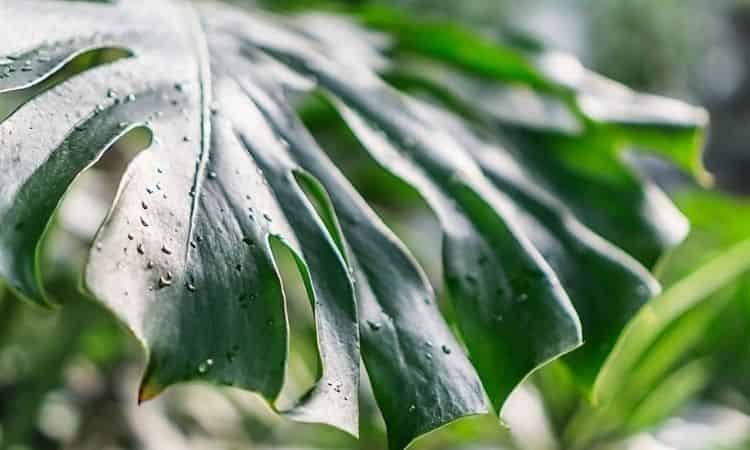 When fertilizing with liquid fertilizer, make sure that the leaves are not wetted.
When fertilizing with liquid fertilizer, make sure that the leaves are not wetted.
FAQ
- Unfortunately, once brown or black colored leaf tissue does not recover anymore so that even if the causes are removed, unsightly stains remain. Only newly developing foliage is then spotless green.
- You can cut off the brown or spotted leaves if they disturb you visually. Cut off the affected leaves just above the leaf axils. This will wake up sleeping eyes sitting below the cut, which will then sprout and replace the cut leaf. If only the tips of the leaves are brown, only shorten the browned tissue parts. Do not cut into the green tissue, but leave a thin brown edge.
- Particularly susceptible to brown leaves and general leaf discoloration is a more demanding species of monstera concerning care and location, such as Monstera adansonii, Monstera obliqua. The species Monstera deliciosa, on the other hand, which is most frequently cultivated in indoor culture, is considered to be rather insensitive if cared for properly. Less susceptible to leaf discoloration is above all the robust and easy-care variety ‘Borsigiana’.
